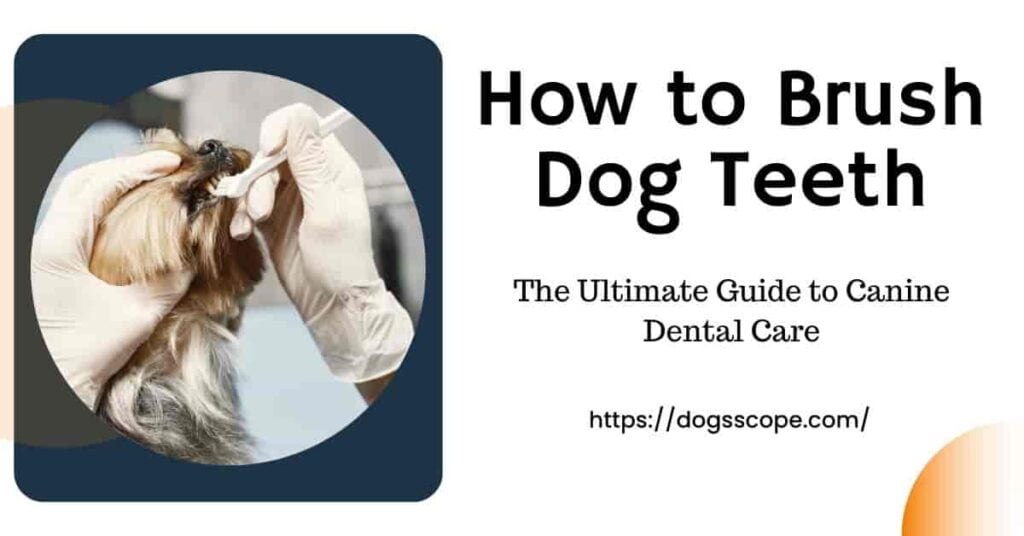Your dog’s wagging tail and playful bark may be the first things you notice, but what about that smile? Dental care is often overlooked in dogs, yet it’s a crucial aspect of their overall health. In this comprehensive guide, you’ll learn everything you need to know about how to brush your dog’s teeth, why it’s essential, and how to make it a regular part of your pet care routine.
The Importance of Dental Care in Dogs
Dental care is not just for humans; it’s equally vital for our four-legged friends. Poor dental hygiene can lead to a host of problems for dogs, including bad breath, gum disease, and even systemic infections that can affect the heart, liver, and kidneys. Regular brushing can prevent these issues and contribute to a longer, healthier life for your dog.
The Right Tools for the Job
Before you start brushing, it’s essential to gather the right tools. You’ll need a dog-specific toothbrush, dog-safe toothpaste, and possibly some dental wipes for those hard-to-reach areas. Never use human toothpaste, as it contains ingredients like fluoride and xylitol that are toxic to dogs.
Sponsored Ads
Dog-Specific Toothbrush
Investing in a dog-specific toothbrush is crucial for effective dental care. These brushes feature softer bristles tailored to a dog’s sensitive gums and a longer handle for better reach. Some advanced models even offer interchangeable heads to accommodate various dog sizes, ensuring a thorough clean for every breed.
Dog-Safe Toothpaste
Selecting the right toothpaste is equally important. Opt for brands specifically formulated for dogs, as these are non-toxic and safe for ingestion. The flavors are also designed to appeal to canine taste buds, with options like chicken, beef, or even peanut butter, making the brushing experience more enjoyable for your pet.
Sponsored Ads
Dental Wipes
For those tricky spots that a toothbrush might miss, dental wipes are an excellent addition to your dog’s oral care routine. These pre-moistened wipes are designed to clean the gum line and the crevices between teeth effectively. They’re particularly useful for smaller breeds or dogs with crowded teeth, offering a supplemental cleaning method that complements regular brushing.
The Brushing Technique
Brushing your dog’s teeth may seem daunting, but with the right technique, it can be a breeze. Here’s a step-by-step guide to make the process as smooth as possible:
Sponsored Ads
Preparation
Introduce your dog to the toothpaste by allowing them to sniff and taste it. This familiarizes them with the flavor and texture, easing initial apprehensions about the brushing process.
Positioning
Choose a comfortable location that offers easy access to your dog’s mouth. Ideal spots include a grooming table, your lap, or a quiet corner on the floor.
Sponsored Ads
Lifting the Lip
Carefully lift your dog’s upper lip to reveal the teeth and gums. This step is crucial for ensuring that you can reach all areas during the brushing session.
Applying Toothpaste
Dispense a pea-sized dollop of dog-specific toothpaste onto the brush. This amount is sufficient for effective cleaning without overwhelming your dog’s mouth.
Brushing
Employ gentle, circular strokes to clean your dog’s teeth. Concentrate on the gum line and outer tooth surfaces, and pay special attention to the back molars where plaque often accumulates.
Duration
Aim to brush each side of your dog’s mouth for at least 30 seconds. A full minute per side is optimal for a comprehensive clean.
Positive Reinforcement
Conclude the brushing routine with a treat or a short play session. This positive reinforcement helps your dog associate tooth brushing with enjoyable experiences, making future sessions easier.
Common Challenges and Solutions
Resistance from Your Dog
It’s quite common for dogs to be hesitant or even resistant when introduced to tooth brushing, particularly if it’s a new experience for them. A practical approach to overcoming this resistance is to start gradually. Begin by brushing just one or two teeth and use positive reinforcement like treats or praise. As your dog becomes more comfortable, you can incrementally increase the number of teeth you brush during each session.
Hard-to-Reach Areas
Certain areas in your dog’s mouth, like the back molars or tight spaces in smaller breeds, can be challenging to clean effectively with a toothbrush. In such instances, dental wipes can serve as a valuable supplement to your regular brushing routine. These wipes are designed to clean those hard-to-reach spots, ensuring a more thorough oral hygiene regimen.
Sensitive Gums
If you notice that your dog has sensitive gums or shows signs of gum disease such as redness or swelling, it’s crucial to consult your veterinarian before initiating any dental care routine. Your vet can provide a thorough oral examination and may recommend specialized toothpaste or other treatments specifically designed to address gum sensitivity or disease.
When to Consult a Veterinarian
While at-home brushing plays a pivotal role in maintaining your dog’s dental health, it doesn’t replace the need for professional dental care. If you observe symptoms like persistent bad breath, yellow or brown teeth, or inflamed gums, it’s imperative to consult your veterinarian. They can conduct a comprehensive oral examination and may recommend specialized treatments or cleanings to address any underlying dental issues.
Conclusion
Brushing your dog’s teeth is an essential but often neglected aspect of pet care. With the right tools and techniques, it can easily become a regular part of your dog’s grooming routine, leading to a happier, healthier life for your furry friend. So grab that dog-safe toothpaste and get brushing—your dog’s sparkling smile will thank you!

